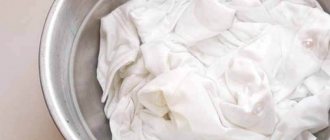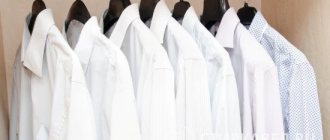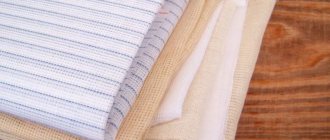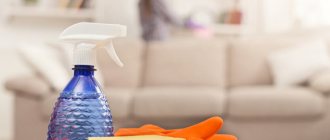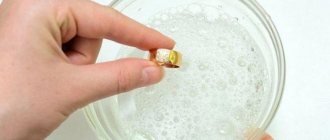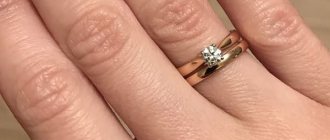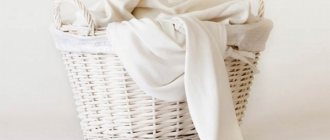White items require special care. Both clothing and home textiles made in white are especially vulnerable to stains. There are a sufficient number of ready-made products for white fabrics on sale, but there are times when they turn out to be ineffective or prohibitively expensive. For such situations, there are time-tested home recipes. The leading position is occupied by bleaching clothes with hydrogen peroxide with the addition of soda and other simple ingredients.
Combination of baking soda, powder
The easiest way to whiten things is to combine NaHCO3, washing powder. Recommended proportions - in equal quantities.
Place the prepared dry mixture into the drum of the washing machine. At hot temperatures, do not get rid of yellowness - sodium bicarbonate works effectively in warm water.
Expert opinion
Attention!
It is recommended to rinse the laundry twice - baking soda can cause irritation to the skin. A thorough rinse with cold water will help prevent the problem.
Stains rarely remain after applying the composition; if yellowness cannot be removed, repeat the process using another recipe based on sodium bicarbonate.
What types of dirt can be removed with soda?
Baking soda is an all-purpose bleach. It helps give a fresh look to yellowed and grayed things. Also removes the following types of stains:
- alcoholic drinks;
- blood;
- fat;
- grass;
- sweat;
- paint;
- iodine, etc.
Sodium carbonic acid cleanses workwear well. It removes traces of fuel oil, gasoline and paraffin without difficulty.
Employees of catering establishments keep a pack of powder nearby to quickly get rid of traces of sauce, cream, etc.
Baking soda, hydrogen peroxide against stains
The combination of NaHCO3 and hydrogen peroxide is used against stubborn stains and yellowing of linen.
Apply the composition carefully - delicate silk fabrics, chiffon, satin can become covered with additional stains.
Anti-stain recipe:
- Mix sodium bicarbonate (30 g), hydrogen peroxide (15 ml).
- Stir until foam forms.
- Cover the stains evenly with the prepared mixture and rub (the process lasts a quarter of an hour).
- Apply the normal cycle using the washing machine.
Washing with a prepared composition will help get rid of yellowness. Instead of powder, use a mixture (peroxide, baking soda).
Carry out the process twice - with a soda solution and regular washing powder.
Advantages of the method
Many housewives have long abandoned popular bleaches in favor of ordinary soda powder, which is found in every home. What is the secret of soda?
- Hypoallergenic. Soda bleaching is safe even for children's clothes, since sodium bicarbonate does not contain aggressive chemical compounds, which often cause severe allergic reactions.
- Versatility. Homemade soda “bleach” can cope with almost all types of stains.
- Availability. Baking soda is easy to buy everywhere, and the price is several times lower than that of “fashionable” bleaches.
Another advantage of sodium bicarbonate is the ability to make a “customized” bleach, depending on the type of fabric being bleached.
You can clean your washing machine using baking soda and vinegar; try the recipes from the following article.
NaHCO3, salt
Common components - NaHCO3, salt - can remove stubborn stains and whiten fabric. It is recommended to carry out a double process - manually, then using a washing machine.
Preparation of the product:
- Mix equal amounts of cooking powder and salt.
- Add warm water (the mixture should be thick and paste-like).
- Spread the mixture in an even layer, completely covering the stain.
- Rub the fabric with your hands.
Recommended for you:
How to quickly and effectively clean frying pans and saucepans from carbon deposits and grease with soda
Yellowness embedded in the fabric can be removed by soaking - a mixture of salt, NaHCO3 (30 g each) diluted with warm water (5 l), immerse the laundry in the composition for 3-5 hours.
Expert opinion
Carefully!
It is not recommended to use salt when machine washing - crystals can damage delicate fabric.
It is better to carry out the process manually after soaking, after which fill the machine tray with a mixture of powder and sodium bicarbonate, and wash the clothes.
Bleaching things with baking soda
Women have long used folk remedies to wash white clothes. Some methods are quite effective in returning things to their whiteness. For example, individual stains from clothing can be removed by moistening them with water, pouring a thick layer of baking soda on top, and then pouring vinegar on them. After two minutes, the stain will disappear.
Product Whiteness
Before bleaching bed linen at home using bleach, you should take care of safety. Even a small drop can hopelessly ruin a carpet, curtain, towel or clothing. It should be stored with the lid tightly closed in an inaccessible place so that children cannot reach it.
The aggressiveness of whiteness makes it impossible to use it for delicate fabrics such as silk or wool. The high chlorine content allows you to bleach tablecloths, kitchen towels, and bedding. When working with white, you should wear rubber gloves.
Optimal solution: 1 tbsp. l. whiteness per 3 liters of water. After mixing, the item to be bleached is placed into the basin, and after 20 minutes it can be removed and rinsed thoroughly with running water. It is not recommended to leave items in this aggressive liquid for more than the specified time to prevent deformation of the fabric.
For heavily soiled items, you can combine boiling with bleach. Whitening and detergent are added to a bowl of water. After mixing, the laundry is placed in it and boiled for 1 hour. Then the laundry is thoroughly rinsed with water.
Baking soda
You can deal with things that have lost their whiteness at home without boiling. Soda not only can whiten white linen, but also helps maintain the structure of the fabric unchanged for a long time. For 1 liter of water add 1 tbsp. l. baking soda and 0.5 tbsp. l. ammonia. Linen is placed in a solution of soda and ammonia for 3 hours.
Use this method to restore the white color to baby clothes using baking soda. Soda is safe for baby's skin and does not cause allergies. Some types of stains require boiling in this solution for half an hour. The result from this method is no worse than that of chemical bleaches. In addition, things do not spoil.
Hydrogen peroxide
This is an affordable method that does not damage the structure of delicate fabrics, including wool and silk. Before bleaching laundry with hydrogen peroxide, you need to purchase a bottle of a 3% solution. For 10 liters of boiling water add 2 tbsp. l. peroxide and 2 tbsp. l. ammonia. The laundry is placed in a hot solution for half an hour and then washed in the usual way.
This method uses ammonia and peroxide to bleach things that have turned gray over time, as well as traces of sweat, deodorant or sunflower oil.
Mustard powder
You can use mustard to restore the white color to your clothes. It is necessary to dissolve a few tablespoons of mustard powder in hot water and immerse things in a basin with mustard. After a few hours, wash with added powder.
Boric acid
For such a bleaching solution, add 2 tsp to 1 liter of warm water. boric acid. Soak things in this solution for 2 hours, then wash with powder. Boric acid is also added when washing in a machine or to boiled water when bleaching on the stove.
Vegetable oil
Heavily soiled kitchen towels are washed with vegetable oil. They are placed in water with bleach, washing powder and vegetable oil. The ingredients are poured into boiled water and towels are placed there. After the liquid has cooled, rinse the towels thoroughly. You can also prepare a composition with vegetable oil, consisting of 3 tbsp. l. washing powder, 3 tbsp. l. oil and the same amount of any type of bleach. Leave the towels in the basin overnight and machine wash them in the morning.
You can remove stains from white items using aspirin. If you moisten yellow stains on clothing in the armpit area with water and dissolved aspirin and leave for 1.5 hours, and then wash with powder, the stains will disappear.
To lighten things that have acquired a gray tint over time, you can add a bag of powder obtained from grinding eggshells to the washing machine. 100 g of shell is enough for one wash. If you wash your laundry with this product, it will restore its whiteness.
Boiling
Of course, you can wash cotton and linen items from time to time. But sooner or later you will have to bleach them by boiling and adding detergent.
A metal container with water is placed on a hot stove, after boiling the water and dissolving laundry soap in it, it is heated at maximum temperature for 40-60 minutes. Stains and contaminated areas on clothing are pre-soaped. Grate the soap. To increase the effect of the procedure, add 1 tbsp to the water. l. ammonia. To ensure even bleaching, the laundry should be stirred with a wooden stick.
Considering that there are practically no chemical components, this whitening method can be used for children and those who suffer from allergies.
If the stains on the laundry are complex and cannot be removed by regular boiling, another method is used. This method is also used to bleach faded bed linen, which over time has acquired a grayish or yellowish tint.
Bleaching powder
To get rid of yellowness in laundry, you need to place 15 g of bleach in 1 liter of warm water. After some time, the water will become transparent, and then it can be poured into the water with the laundry. Boil laundry for no more than 0.5 hours. At the end of the procedure, boiled items must be thoroughly rinsed. However, it is not recommended to use this method often. An aggressive composition can weaken the weave threads and the item will tear.
The product perfectly deodorizes, disinfects, and cleans. This allows it to be used as a detergent.
Washing with soda is safe for health, does not harm the washing machine and improves the final result of the procedure.
The product can be used both in pure concentration and as part of a mixture. Many housewives simply add baking soda to washing powder. At the same time, things become softer, the colors of the fabrics become richer.
Regular baking soda in combination with ammonia can remove stains from white things.
We invite you to familiarize yourself with Foot Spray - rating of the best anti-sweat and odor products
Dissolve 5 large spoons of soda and 2 ammonia in 5 liters of warm water, then stir well. Soak white items in the baking soda solution for several hours (3-4), rinse and wash as usual. A soda solution will get rid of yellowness if, after soaking, you additionally boil the laundry in it for about 30 minutes.
Some housewives add soda to the drum of the washing machine (several tablespoons) before washing. A stain on a tablecloth or carpet is removed with soda and vinegar. Sprinkle a little baking soda on the stain. A piece of cloth is soaked in vinegar. Then the stain is rubbed in a circle: from the middle to the edges. Repeat if necessary, and when dry, rinse the treated area in running water. It is not recommended to use this method for delicate fabrics. Wear rubber gloves when working with vinegar!
How to boil laundry with soda to whiten it?
1. Prepare a solution: for 5 liters of warm water – 5 tbsp. l. baking soda or 3 tbsp. l. calcined 2 tbsp. spoons of ammonia.2. The laundry is boiled in the solution for 30 minutes.3. In case of persistent stains, the laundry is pre-soaked.4. After bleaching, the laundry is rinsed or washed in the usual way.
Regular baking soda in combination with ammonia can remove stains from white things. Dissolve 5 large spoons of soda and 2 ammonia in 5 liters of warm water, then stir well. Soak white items in the baking soda solution for several hours (3-4), rinse and wash as usual. A soda solution will get rid of yellowness if, after soaking, you additionally boil the laundry in it for about 30 minutes.
Regular baking soda in combination with ammonia can remove stains from white things. Dissolve 5 large spoons of soda and 2 ammonia in 5 liters of warm water, then stir well. Soak white items in the baking soda solution for several hours (3-4), rinse and wash as usual. A soda solution will get rid of yellowness if, after soaking, you additionally boil the laundry in it for about 30 minutes.
Vinegar, NaHCO3 against stains
Sodium bicarbonate slaked with vinegar is recommended for use only against stains. Handle delicate fabrics with care - the composition is aggressive and can damage fibers and threads.
Preparation and use:
- Pour sodium bicarbonate (50 g) with table vinegar (100 ml).
- Stir until foam forms.
- Use immediately.
Remove stains with foam - spread, rub, leave for a quarter of an hour. Adding NaHCO3 is also recommended in the machine.
Expert opinion
Advice!
You should not often use a product based on NaHCO3 or vinegar - over time, the fabric will wear out, acquire a gray tint, and become thin. Bleaching should be carried out as needed, alternating with the usual use of a good powder.
How to bleach white clothes with a mixture of powder, bleach, oil and soda
- What does it cope with? This is a very effective way to combat yellowness and all kinds of stains. The product can remove even very old stains.
- What fabrics is it suitable for? For cotton and linen.
Pour 1 cup (250 ml volume) of laundry detergent, 4 tablespoons of good powder bleach and 1 tablespoon of baking soda into a saucepan.
Pour in 4 tablespoons of sunflower oil. Pour 10 liters of boiling water, stir and put dry things there. The quantity of necessary components can be changed, maintaining the proportions.
Place the pan on low heat for 15–20 minutes and stir the laundry occasionally. Remove from heat and let sit overnight or 6-8 hours. Then wash the items in the machine.
Sodium bicarbonate, lemon
It is recommended to use a combination of sodium bicarbonate and lemon against the yellowness of fabric.
Application is possible on delicate fabrics - the composition carefully removes dirt, stains, yellow-gray tint, returning whiteness.
Preparation:
- Cut the citrus, squeeze out the juice (you will need 50 ml), strain using a mesh or fine sieve.
- Combine NaHCO3 (40 g), citrus juice.
- Stir, apply after extinguishing (the appearance of persistent foam).
It is recommended to carry out manual, machine processes, pre-soaking. Remove stains by applying a thick layer of foam - spread and rub with your hands.
When machine washing, add a mixture of washing powder, citrus juice, baking soda to the tray (take equal amounts of components), pre-extinguish the sodium bicarbonate.
Whitening with soda ash
Soda ash is officially recognized as an excellent disinfectant and bleaching agent. The concentration of alkaline compounds in calcined is much higher than in food grade, so it is more often used when washing and bleaching large quantities of laundry.
For whitening with soda ash:
- Take laundry soap and cut a small piece. Grate it on a fine grater - you should get 50-60 g. fine soap shavings.
- Boil 1 liter. water, pour soap into boiling water. Stir until the chips are completely dissolved.
- Add 45 gr. soda ash. Stir thoroughly, during the mixing process you should get a jelly-like mass.
- To add a pleasant aroma, add 2-4 drops of your favorite essential oil to the mixture.
This product is safe both for bleaching items and for hand or machine washing. In addition to whitening, the product removes unpleasant odors well.
Due to the high concentration of alkali, soda ash is only suitable for bleaching items made of linen, cotton and synthetic material. It cannot be used for woolen products and silk.
Sodium bicarbonate, laundry soap
At home, to whiten bed linen, it is recommended to use a mixture of NaHCO3 and laundry soap. The composition is used by boiling, in a machine.
Preparation:
- Using a grater, turn the dark laundry soap (bar) into a paste.
- Add baking soda and stir.
- Fill with hot water (1 l).
- Stir with a wooden stick, wait until the soap grains disappear and foam appears.
Recommended for you:
Cleaning carpet with baking soda at home - 5 best ways
Dilute hot water (5-7 l) with a soda-soap solution and fill the boiling container. Pre-soak white items and use lemon soda.
After soaking, boil the bed linen for half an hour, stirring. Rinse and machine wash if necessary.
How to wash faded items
Before you bleach your laundry with soda and peroxide when other things have stained it, you need to learn the basic rule: you need to get rid of dirt as quickly as possible. The first remedy is repeated washing with the addition of a double portion of a special detergent for washing whites, strengthened with soda ash (in a ratio of ten to one). If this method did not help or the color damage was not detected immediately, there are more radical methods:
We recommend:
How to remove rust from clothes at home
- Cotton linen can be boiled with the addition of hydrogen peroxide and ammonia. For a bucket of water you need a glass of hydrogen solution and 15 milliliters of ammonia, the boiling time should be up to half an hour;
- You can try to revive linen, denim, thick cotton with the help of soda paste. The water-soda slurry is applied to the stains locally, left for 20 minutes, after which the entire item is sent for washing;
- synthetic fabrics can be saved with soapy water. To do this, dissolve a crushed piece of laundry soap in half a liter of water, add two tablespoons of peroxide and five ammonia. The finished mixture is poured into a bucket of warm water, where the faded synthetics are soaked for half an hour before washing.
Note! None of the given recipes are guaranteed to work. The item may not be washed to its original snow-white state. In this case, the only way is to dye the clothes a different color using ready-made dyes.
Sodium bicarbonate, ammonia
The combination of NaHCO3 and ammonia is used to bleach underwear - the composition is gentle on the fabric. Getting rid of stains is carried out in two stages - soaking and rolling in a machine.
Preparation:
- Combine sodium bicarbonate (60 g), ammonia (30 ml).
- Stir, wait a quarter of an hour.
- Combine hot water (5 l), prepared soda mixture.
- Cool, lower underwear, rub with hands, leave.
After 2-4 hours, rub it again with your hands, put it in the washing machine, and turn on the gentle mode.
Double rinsing and using aromatic rinses will get rid of the smell of ammonia.
How to prepare fabrics for bleaching
Stains on white always appear - as luck would have it, the collar of a shirt gets rubbed, kitchen towels get dirty very quickly, nasty yellowing forms under the armpits of blouses, and after several washes bed linen loses its original shine. Don’t rush to give up your favorite but damaged white clothes - they can be saved without even going to the dry cleaner.
You may be interested in: How to clean an automatic machine with soda from scale, mold and dirt - preventive measures
Things need to be prepared for bleaching. First, try the chosen method on a small area of fabric to understand how it reacts to soda with additives. In the meantime, check out the proven washing rules:
- Very dirty items should be pre-soaked in washing powder for several hours.
- Study the labels on clothing - there is useful information about what means and techniques are contraindicated.
- Never wash white clothes together with colored ones, even if you think they won't fade.
- Try not to boil things often, as this will make them lose their strength and appear old. Do not bleach the fabric every time you wash it.
- If possible, dry white items in the sun.
- Bleach fabrics of different compositions separately.
Every experienced housewife knows these simple truths; they allow you to use things for a long time and keep them in excellent condition.
Don't rush to part with your favorite things, they can be saved with soda
Benefits of Baking Soda for Whitening
Baking soda is a universal remedy that is found in every kitchen. We use baking soda when we need to extinguish heartburn, soothe irritated skin and stomatitis, wash cups and glasses, and prepare pancakes. We will not list everything that simple alkali can do, and washing is not the last place on the list. It bleaches various fabrics well, and together with other products copes with complex stains.
Also read: How to boil dishes with soda and glue to remove carbon deposits
Housewives add soda to washing powders and use it separately for bleaching. So, the advantages of this tool are:
- Cheapness.
- Safety. Soda does not contain harmful substances, so it is suitable for children's clothes.
- By adding baking soda to your washing machine, you will protect it from scale.
- It destroys fabrics less than factory bleaches.
Baking soda, citric acid
Expert opinion
Attention!
A mixture of sodium bicarbonate and citric acid is used against stains, persistent yellowness, and gray tints of fabric. White clothes are also washed with a rather aggressive composition. Do not use the mixture on thin fabrics - there is a risk of damage to the fibers.
Preparation:
- Combine NaHCO3, citric acid (equal proportions).
- For 100 gr. dry mixture - 5 liters of water.
- Stir, put in clothes, leave for 3 hours.
Carry out a manual process. It is recommended to additionally rub stains on clothing with a mixture of cooking powder and acid, pre-moistened with warm water. The consistency should resemble a thick paste.
Machine wash using dry composition (NaHCO3, acid) placed in a tray. Choose a gentle mode, temperature – no higher than 40 degrees.
What types of fabrics can you use baking soda with?
- Sodium carbonate exhibits its properties best when washing clothes made from natural fabrics - linen and cotton. This makes it an ideal tool for cleaning quickly soiled home textiles - tablecloths, towels, bed linen.
- Woolen and silk materials cannot be bleached with soda, as they do not tolerate an alkaline environment. In it, fabrics become rigid and quickly lose their attractive appearance. It is impossible to predict the effect of alkali on synthetics, so it is better not to take risks. These items can be easily washed with standard detergent.
It is prohibited to use sodium salt for rubberized and impregnated materials, leatherette and membrane surfaces.
Soda ash is freely used for colored products, but in small concentrations. Maximum permissible norm: per 10 liters of water - 5 tbsp. l. powder. The liquid should be of moderate temperature - up to 40 degrees.
Secrets of using soda solutions
Sodium bicarbonate is an aggressive substance that can damage sensitive skin, cause an allergic reaction, rashes, and itching.
Rubber gloves will help prevent troubles - apply soda products after protecting your hands.
Sodium bicarbonate is more gentle on tissues than chemicals offered in stores, but people are often allergic to cooking powder.
Recommended for you:
How to clean a microwave with baking soda at home
Rinsing twice with cold water will help prevent troubles - the liquid will completely eliminate particles of the substance remaining after washing.
Alternation will help improve the results of using soda solutions. It is recommended to use different formulations for each whitening session.
Also change the methods of getting rid of yellowness, dirt, stains - soaking, hand washing, machine washing.
Precautionary measures
- The powder has a strong fat-soluble and dehydrating effect, so in high concentrations it can form an alkaline burn. From contact with it, the wound begins to burn and sting.
- Alkali dries the skin, so rubber gloves are needed when working with it.
- The pack is stored tightly closed away from food products, in a dry place (to avoid lumps and caking), inaccessible to children and pets.
- The higher the temperature of the liquid, the more active the substance is. The same amount of sodium carbonate, which was comfortable to wash with in cool water, can cause irritation in hot water.
- Sodium carbonic acid belongs to the third hazard class. It is used with caution in rooms with high humidity.
Disadvantages of Traditional Whitening Products
There are a huge number of whitening products on the market. However, most of the modern remedies have a number of significant drawbacks, so “grandmother’s” soda remedy still remains effective and in demand.
Disadvantages of modern bleaches:
- Aggressive chemicals that cause allergies. Also, such “chemistry” can seriously damage the fabric.
- Fading of some materials. If you didn’t get the dosage right, you can say goodbye to the bright color of your favorite thing.
- Price. Widely advertised bleaches “delight” with a completely undemocratic price, while a solution made from soda will cost you pennies.
- Diversity. Each type of bleach is designed for a specific type of fabric, so to clean things made from different materials (synthetics, cotton, silk, etc.) you will have to pay a significant amount.
